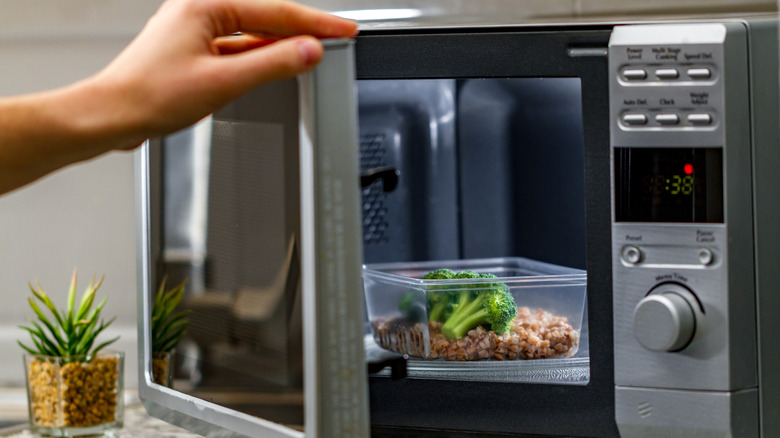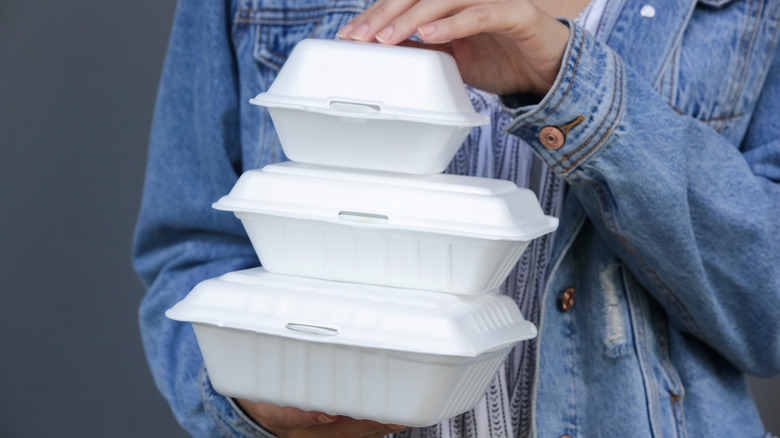Types Of Containers You Should Never Use To Reheat Food In Your Microwave
Ordering takeout is a great way to cut back on the time spent cooking dinner after a long day at work. With delivery apps like DoorDash and GrubHub, getting delicious food brought right to your door is easier than ever. Once you're finished with your favorite takeout meal, having leftovers in the refrigerator is always a welcomed convenience for later.
Microwaves are a convenient way to quickly reheat food like last night's rice during short lunch breaks or on days that you just don't feel like cooking. While reheated leftovers do make for a quick and easy meal, you should use caution when it comes to reheating them safely.
Some items you shouldn't put in a microwave are common knowledge (such as metal). However, others may not be as well known. Certain items can even pose a health or safety risk when placed in the microwave. So it is important to be aware of what you are heating up in order to enjoy your food safely.
Avoid heating these items
As a general rule, foam containers should never be microwaved unless it is clearly marked that it is safe. When microwaved, styrene, a chemical compound often found in these containers, can seep into your food. Healthline reports that styrene has been linked to cancers in animals and humans.
Another item to avoid microwaving is paper bags. While these may seem harmless, American Home Shield reports that they can actually release toxins and fumes when heated up. Paper bags heat quickly, and, if they are left in a microwave too long, may pose a fire hazard.
When heated to high temperatures, plastic bags can melt and may release the chemical compound bisphenol A (BPA) (via American Home Shield). According to the United States Environmental Protection Agency (EPA), animal studies have shown that BPA is considered a toxicant to several bodily systems, including the endocrine, and may impact childhood development. These are not exactly pleasant thoughts when reheating your leftover Italian food.
If you are not sure if a container may be microwave-safe, a good rule of thumb is to transfer it to a container that is clearly labeled to be safe for use in the appliance.

